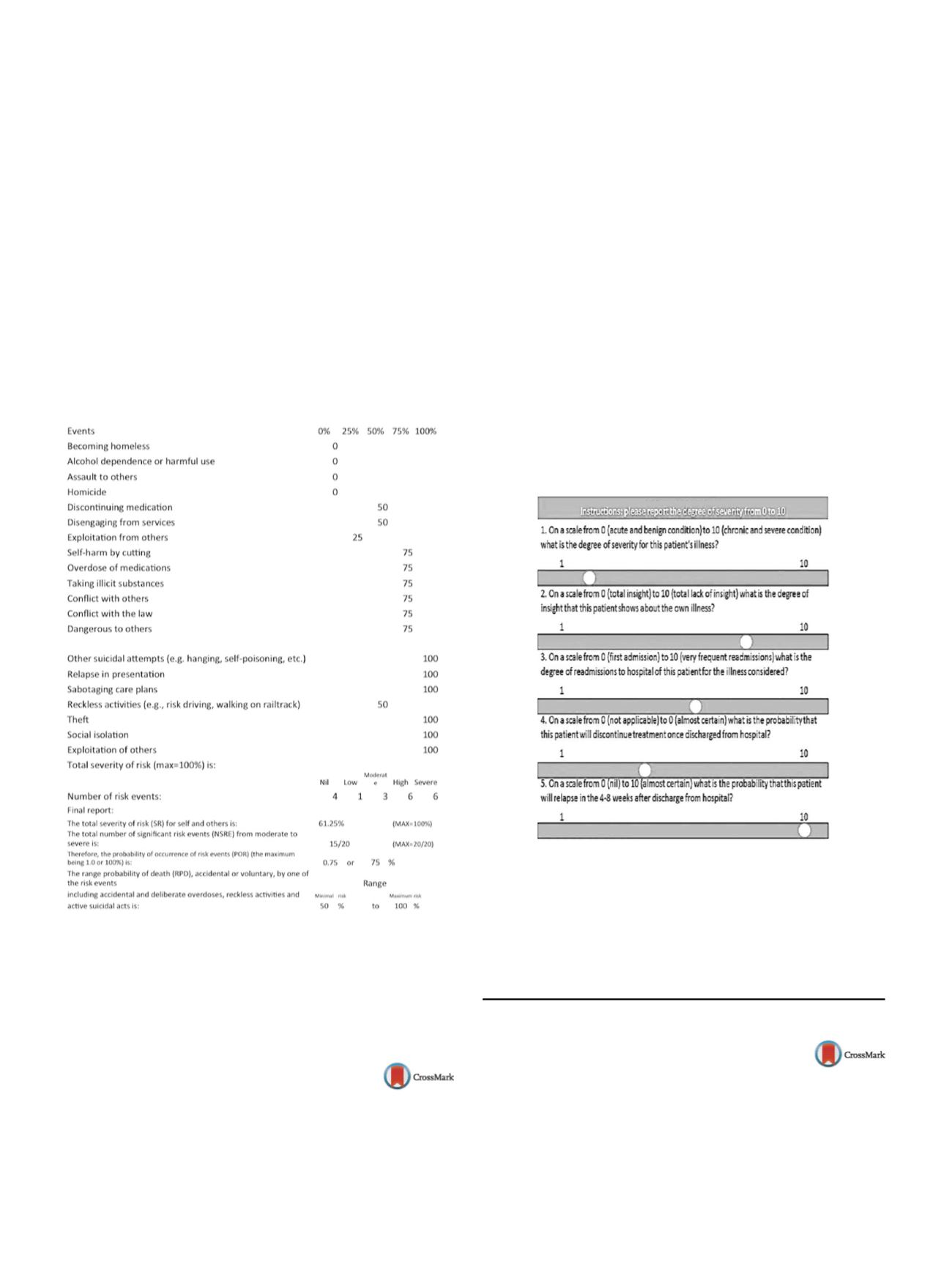

S732
25th European Congress of Psychiatry / European Psychiatry 41S (2017) S710–S771
– severity of risk (SR) = average for the whole table multiplied by %;
– number of significant risk events (NSRE) = count of risks scored
from 50% to 100% divided by 20 (items);
– probability of occurrence of risks (POR =NSRE%);
– range probability of death (RPD) = range score of (over-
dose + suicide + reckless activities)%.
Two raters assessed independently
n
= 8 patients. Kappa inter-rater
statistic was used by dichotomous results (above-below cut-off
score).
Results
Inter-rater Kappa = 0.60 indicates a moderate inter-rater
agreement. In the sample, only 2 patients scored above the cut-off
score of 50, indicating a level of moderate-to-severe risk. For the
other patients, the average SR = 36%, indicating low-to-moderate
risk.
Conclusions
PRAS is constantly used to assess the likelihood that
the care provided to patients admitted to hospital is sufficient or
whether major remedial action is required.
Table 1
Disclosure of interest
The authors have not supplied their decla-
ration of competing interest.
http://dx.doi.org/10.1016/j.eurpsy.2017.01.1338EV1009
Probability of Relapse Scale (PRORES)
for psychiatric inpatients
A. Shoka
1 ,∗
, C. Lazzari
21
University of Essex, School of Health and Social Care, University of
Essex, Colchester, United Kingdom
2
North Essex NHS University Foundation Trust, General Adult
Psychiatry, Colchester, United Kingdom
∗
Corresponding author.
Introduction
The prediction of relapse in presentation is central
to psychiatric prognosis.
Objectives
The Probability of Relapse Scale (PRORES)
( Table 1 ) is
used by the authors to predict the likelihood of relapse by psychi-
atric inpatients.
Aims
To tailor better care plans by knowing the likelihood of
relapse and readmission to hospital.
Methods
Eighteen inpatients were diagnosed with the ICD-10
codes. Results were reported on a 5-point probability scale from 0
(less severe) to 10 (most severe). The 5 items are: degree of severity
of illness, degree of patient’s insight, frequency of readmission into
hospital, probability of discontinuation of therapy and probability
of relapse in the 4–6 weeks after discharge.
Results
With the cut-off score at 25 (score 5
×
5 items), indicating
a moderate level of relapse, we ascertained that 100% of patients
with a personality disorder (usually borderline) and substancemis-
use relapse are readmitted shortly after discharge, compared with
85.71% of those with psychoses and 66% of those with mood disor-
ders.
Conclusions
The PRORES can help support those patients who are
at elevated risks of relapsing due to any of the major causes: dis-
continuation of treatment, chronicity and poor insight into their
own condition
( Table 1 ).Table 1
PRORES Scale.
Disclosure of interest
The authors have not supplied their decla-
ration of competing interest.
http://dx.doi.org/10.1016/j.eurpsy.2017.01.1339e-Poster Viewing: Promotion of mental health
EV1010
Flourishing: Factors associated with
positive mental health among young
adults with neuropsychiatric
disorders
K. Appelqvist-Schmidlechner
1 ,∗
, R. Lämsä
1, T.H. Annamari
21
National Institute for Health and Welfare, Mental Health Unit,
Helsinki, Finland
2
Social Insurance Institution, Research Department, Helsinki, Finland
∗
Corresponding author.


















